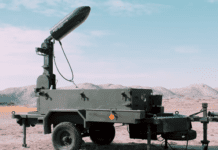This post is also available in:
 עברית (Hebrew)
עברית (Hebrew)
Researchers at the Department of Energy’s Pacific Northwest National Laboratory (PNNL) in the U.S. have been working for nearly a decade on methods to identify the “fingerprints” of potential chemical threats. The ability to identify a particular agent and attribute its source is crucial to responding to and preventing these threats.
The PNNL research team is supported by the Department of Homeland Security’s Science and Technology Directorate and other U.S. government sponsors. Their work involves developing approaches to detect trace amounts of telltale compounds — the fingerprints, in samples taken from the area where an alleged attack took place or where an attack was thwarted.
According to tri-cityherald.com, the researchers are advancing the science behind the ability to identify the source of a particular chemical threat. Through the use of analytical techniques, researchers help authorities connect a particular threat agent to where it may have been manufactured and, in some cases, to the specific lot of precursor materials. This information could be used by authorities to attribute a chemical attack to an individual, organization or state entity. This could help prevent follow-on attacks and, perhaps, even prevent them in the first place.
For example, cyanide is used in everyday products like pesticides and plastics, as well as for mining. But cyanide also can be used to poison food and medicines. The steps to make cyanide are pretty much the same from manufacturer to manufacturer. However, researchers have found that various factors, including the manufacturing process and materials may introduce manufacturer-specific impurities that can be detected in the final product. These “chemical attribution signatures” are the fingerprints authorities need.
The research has shown that cyanide’s signatures are probably unique enough to reveal where it was manufactured, by geographical location as well as specific plant, thereby helping authorities to determine who might have had access.
PNNL researchers participated in the recent American Chemical Society National Meeting, at which they organized a symposium on chemical forensics. This symposium brought together experts from around the world, including representatives from the Organisation for Prohibition of Chemical Weapons (OPCW) — an independent, international disarmament organization with 192 members that are working together to rid the world of the threat of chemical weapons. Today, 90 percent of the world’s declared stockpile already has been destroyed.
Through technical expertise and leadership like this, PNNL scientists are making it easier for authorities to find those behind chemical attacks, as well as those who might be planning to use chemical weapons.

























